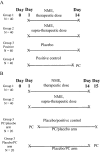The thorough QT/QTc study 4 years after the implementation of the ICH E14 guidance
- PMID: 19922536
- PMCID: PMC2823351
- DOI: 10.1111/j.1476-5381.2009.00487.x
The thorough QT/QTc study 4 years after the implementation of the ICH E14 guidance
Abstract
The ICH E14 guidance on how to clinically assess a new drug's liability to prolong the QT interval was adopted in May 2005. A centre-piece of the guidance was the establishment of one single trial, the 'thorough QT/QTc study', intended to confidently identify drugs that may cause QT prolongation. Initially perceived as a great challenge, this study has rapidly become a standard component of all clinical development programs for new molecular entities. The study is normally conducted in healthy volunteers, includes both a positive and a negative (placebo) control and is stringently powered to exclude an effect on the QTc interval exceeding 10 ms. The E14 guidance was intentionally not very prescriptive and allowed sponsors and service providers to explore new methodologies. This has allowed for a rapid development of new methods during the first years after the guidance's implementation, such as computer-assisted algorithms for QT measurements. Regulators have worked in close collaboration with pharmaceutical industry to set standards for the design and conduct of the 'thorough QT/QTc study', which therefore has evolved as a key component of cardiac safety assessment of new drugs. This paper summarizes the requirements on the 'thorough QT/QTc study' with emphasis on the standard that has evolved based on interactions between regulators and sponsors and the experience from a large number of completed studies.
Figures


References
-
- Badilini F, Maison-Blanche P. Holter monitoring for QT: the RR bin method in depth. In: Morganroth J, Gussak I, editors. Cardiac Safety of Noncardiac Drugs: Practical Guidelines for Clinical Research and Drug Development. Totowa, NJ: Humana Press, Inc; 2005. pp. 167–185.
-
- Barbey JT, Lazzara R, Zipes DP. Spontaneous adverse event reports of serious ventricular arrhythmias, QT prolongation, syncope, and sudden death in patients treated with cisapride. J Cardiovasc Pharmacol Ther. 2002;7:65–76. - PubMed
-
- Bednar MM, Harrigan EP, Ruskin JN. Torsades de pointes associated with nonantiarrhythmic drugs and observations on gender and QTc. Am J Cardiol. 2002;89:1316–1319. - PubMed
-
- Benton RE, Sale M, Flockhart DA, Woosley RL. Greater quinidine-induced QTc interval prolongation in women. Clin Pharmacol Ther. 2000;67:413–418. - PubMed
Publication types
MeSH terms
LinkOut - more resources
Full Text Sources
Medical

